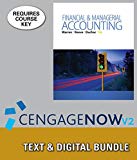
Concept explainers
(1) (a)
Allowance method:
It is a method for accounting bad debt expense, where amount of uncollectible accounts receivables are estimated and recorded at the end of particular period. Under this method,
Percentage of sales method:
Credit sales are recorded by debiting (increasing)
It is a method of estimating the bad debts (expected loss on extending credit), by multiplying the expected percentage of uncollectible with the total amount of net credit sale (or total sales) for a specific period. Under percentage of sales method, estimated bad debts would be treated as a bad debt expense of the particular period.
the amount of (a) the addition to allowance for doubtful accounts and (b) the accounts written off for each of the four years.
(2)
To advise: Person LJ, whether the estimate of ½ of 1% of credit sales appears reasonable.
(3)
To discuss: The action, which is required to determine the required balance in allowance for doubtful accounts by December 31, 2016, and suggest the possible changes for the recommended accounting for uncollectible receivables.
Want to see the full answer?
Check out a sample textbook solution
Chapter 8 Solutions
Bundle: Financial & Managerial Accounting, 13th + Working Papers, Volume 1, Chapters 1-15 For Warren/reeve/duchac’s Corporate Financial Accounting, ... 13th + Cengagenow™v2, 2 Terms Access Code
- Horngren's Financial & Managerial Accounting: The Managerial Chapters, 8th Edition. Lily-Mae makes handheld calculators in two models: basic and professional. Lily-Mae estimated $812,500 of manufacturing overhead and 625,000 machine hours for the year. The basic model actually consumed 250,000 machine hours, and the professional model consumed 375,000 machine hours.Compute the predetermined overhead allocation rate using machine hours (MHr) as the allocation base. How much overhead is allocated to the basic model? To the professional model? Basic $325,000arrow_forward3. A corporation's working capital is calculated using which amounts? Total Assets And Total Liabilities Total Assets And Current Liabilities Current Assets And Current Liabilitiesarrow_forwardThe changes that occurred during a recent year in the accounts Retained Earnings and Treasury Stock will be presented in which financial statement? Balance Sheet Income Statement Statement Of Cash Flows Statement Of Comprehensive Income Statement Of Stockholders' Equityarrow_forward
- The amount spent for capital expenditures will be reported in which section of the statement of cash flows? Cash Provided/used In Financing Activities Cash Provided/used In Investing Activities Cash Provided/used In Operating Activities Supplemental Informationarrow_forwardWhich of the following will appear as a negative amount on a statement of cash flows that was prepared using the indirect method? A Decrease In Inventory An Increase In Accounts Payable An Increase In Accounts Receivable Depreciation Expensearrow_forwardWhich of the following will appear as a positive amount on a statement of cash flows that was prepared using the indirect method? An Increase In Accounts Receivable An Increase In Inventory A Decrease In Accounts Payable Depreciation Expensearrow_forward
- Principles of Accounting Volume 1AccountingISBN:9781947172685Author:OpenStaxPublisher:OpenStax College
 College Accounting, Chapters 1-27AccountingISBN:9781337794756Author:HEINTZ, James A.Publisher:Cengage Learning,
College Accounting, Chapters 1-27AccountingISBN:9781337794756Author:HEINTZ, James A.Publisher:Cengage Learning, College Accounting (Book Only): A Career ApproachAccountingISBN:9781305084087Author:Cathy J. ScottPublisher:Cengage Learning
College Accounting (Book Only): A Career ApproachAccountingISBN:9781305084087Author:Cathy J. ScottPublisher:Cengage Learning  Financial AccountingAccountingISBN:9781337272124Author:Carl Warren, James M. Reeve, Jonathan DuchacPublisher:Cengage Learning
Financial AccountingAccountingISBN:9781337272124Author:Carl Warren, James M. Reeve, Jonathan DuchacPublisher:Cengage Learning Financial Accounting: The Impact on Decision Make...AccountingISBN:9781305654174Author:Gary A. Porter, Curtis L. NortonPublisher:Cengage Learning
Financial Accounting: The Impact on Decision Make...AccountingISBN:9781305654174Author:Gary A. Porter, Curtis L. NortonPublisher:Cengage Learning





